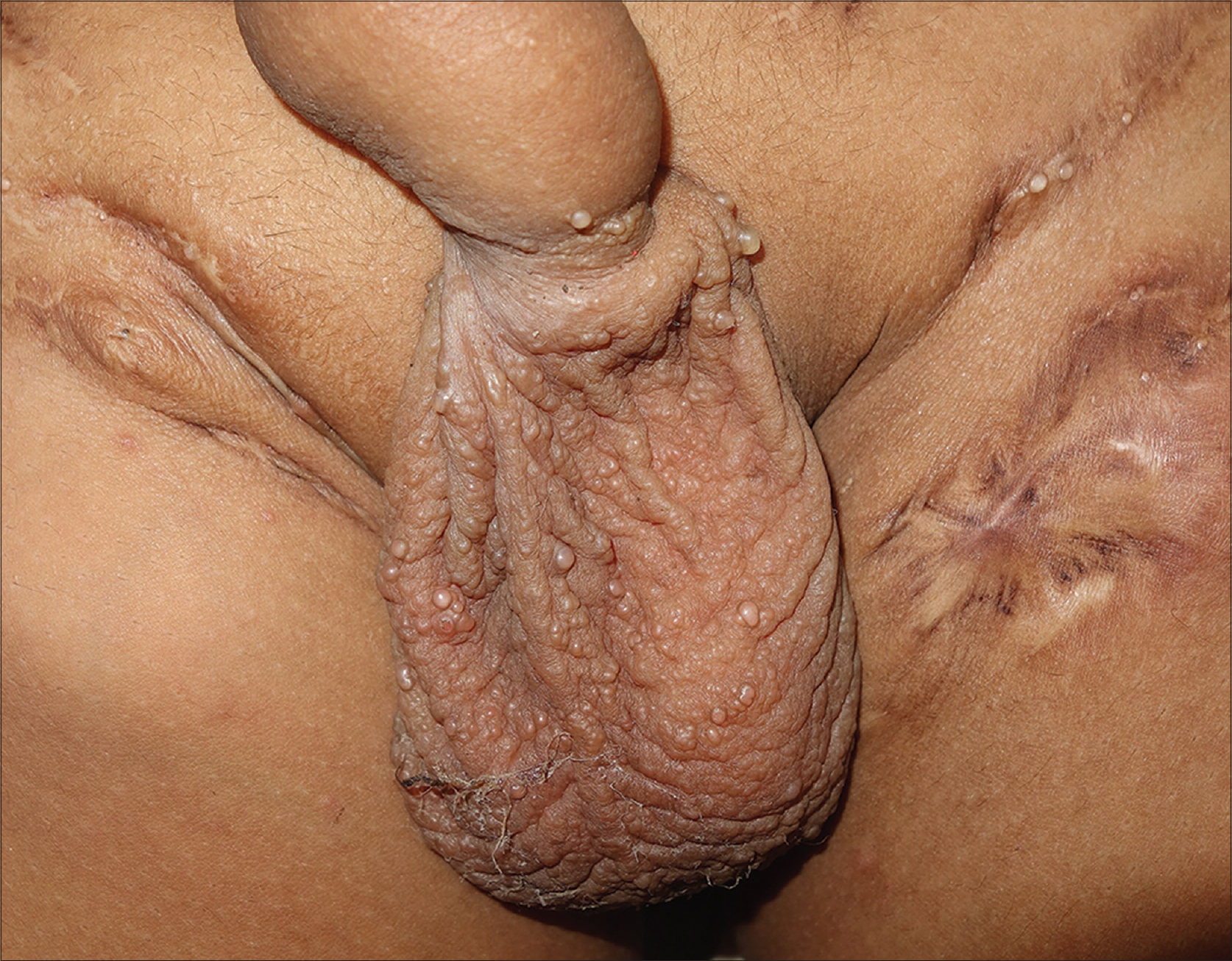Translate this page into:
Scrotal lymphangiectasia following scrofuloderma
Corresponding Author:
Debabrata Bandyopadhyay
Department of Dermatology, Venereology and Leprosy, Medical College and Hospital, 88, College Street, Kolkata - 700 073, West Bengal
India
dr_dban@yahoo.com
| How to cite this article: Bandyopadhyay D. Scrotal lymphangiectasia following scrofuloderma. Indian J Dermatol Venereol Leprol 2017;83:397-398 |
A 15-year-old boy presented with multiple small blisters on his scrotum with occasional discharge of serous fluid on minor trauma for the duration of 6 months [Figure - 1]. His medical records revealed a history of scrofuloderma of both inguinal regions 2 years ago that healed with prominent scars with antitubercular drugs. Cutaneous lymphangiectasia arises from obstruction to lymphatic drainage with subsequent backflow and expansion of dermal lymphatics. Lymphangiectasia of the scrotum may occur after radiation or surgical removal of lymph nodes for cancer, tuberculous inguinal lymphadenitis or hidradenitis suppurativa. The condition closely resembles lymphangioma circumscriptum which usually appears congenitally or during early childhood on normally appearing skin without antecedent lymphatic obstruction. Although recurrence rate is high, destruction of the lesions by laser or diathermy may be palliative.
 |
| Figure 1: Multiple small blisters and translucent papules on the scrotum. Prominent scars secondary to scrofuloderma, present over both inguinal regions and the left femoral region |
Financial support and sponsorship
Nil.
Conflicts of interest
There are no conflicts of interest.
Fulltext Views
2,892
PDF downloads
2,952





